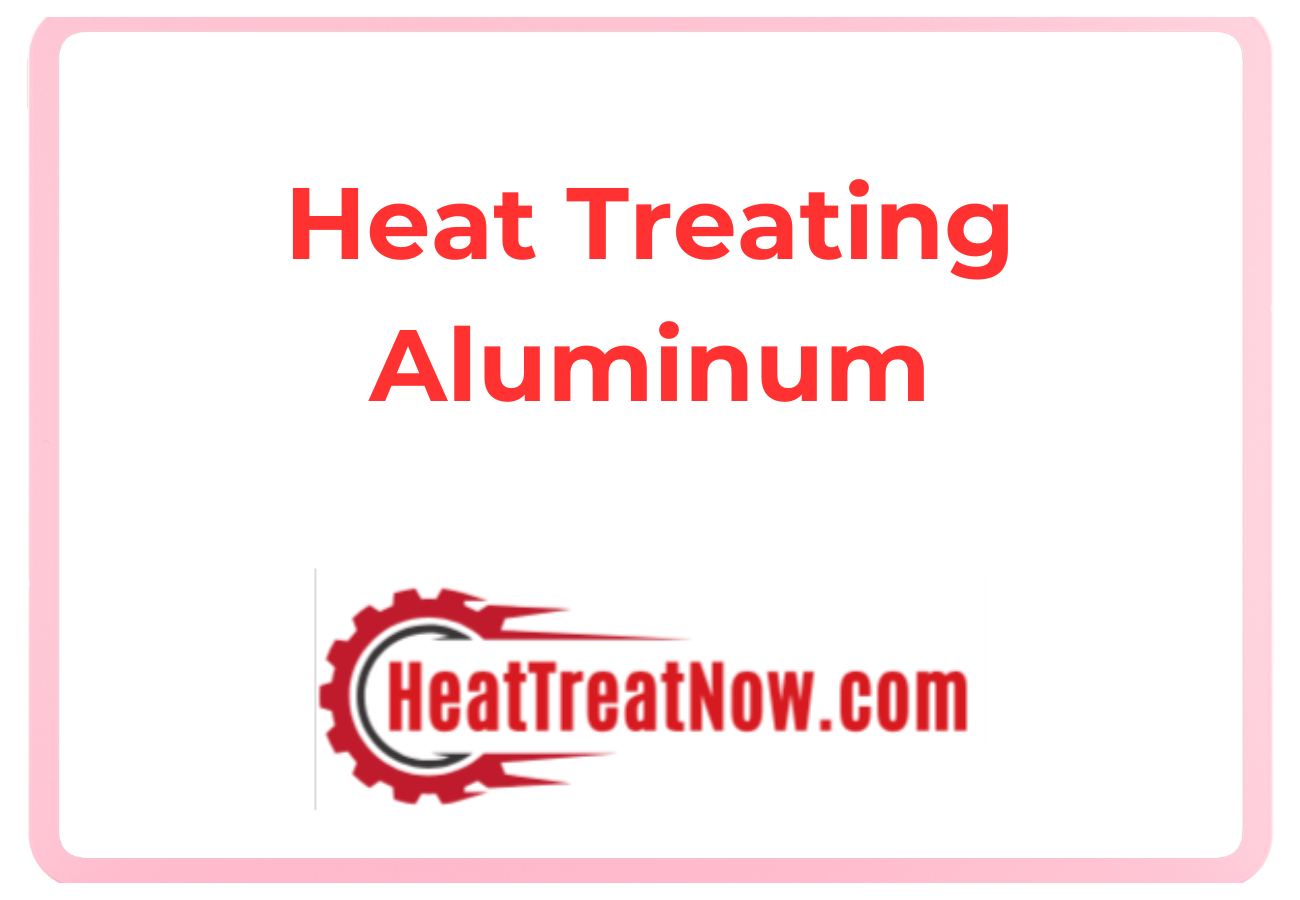Each aluminum alloy has distinct physical characteristics that make it ideal for certain applications, and heat treatment can enhance these properties. This process involves carefully heating and cooling the material to modify its microstructure and, consequently, its properties.
While you might know that steel is heat-treated at very high temperatures, aluminum requires a different approach due to its lower melting point and higher thermal conductivity. Understanding how to properly heat treat aluminum and its alloys can help you decide if this technique is beneficial for your project.
What Do You Need to Heat Treat Aluminum?
To heat-treat aluminum using an industrial kiln or heat treat oven, you'll need the following equipment:
- Pyrometer/Thermocouples: For accurate temperature measurement and control inside the kiln.
- Quench Tank: For rapid cooling, fill with water, oil, or another appropriate quenching medium.
- Temperature Control System: For precise regulation of the heating and cooling processes.
- Tongs or Handling Tools: To safely move the aluminum pieces in and out of the kiln and quenching tank.
- Protective Gear: Such as heat-resistant gloves and safety glasses for personal protection.
Related: Considerations When Selecting Kilns for Metal Heat Treating
Is It Possible to Heat Treat Aluminum?
Certain aluminum alloys are suitable for heat treatment; a process manufacturers use to enhance the material's properties beyond its original state. Heat treatments can boost the alloy's strength, increase its ductility, improve hardness, and relieve internal stresses. Alloys from the 2XXX, 6XXX, 7XXX, and 8XXX series, and occasionally the 4XXX series, can be heat treated to achieve these benefits. In contrast, the 1XXX series (pure aluminum) is generally not heat-treatable, and the 3XXX and 5XXX series are typically strengthened by work hardening rather than heat treatment. The ability to heat treat an alloy depends largely on its chemical composition; some elements have higher solubility in aluminum at elevated temperatures, allowing their atoms to redistribute evenly and improve the alloy's overall structure.
Related: How to Heat Treat a Knife
4 Types of Heat Treating for Aluminum
Now that you’ve learned what types of aluminum can be heat treated, let’s take a look at the four types of heat treatment you can do for aluminum:
1. Annealing
Aluminum alloys can undergo work hardening, also known as strain hardening, during plastic deformation. This process involves the grain structures within the alloy sliding against each other along slip planes. As deformation continues, the number of easily deformable slip planes decreases, requiring more force to achieve further shaping. Once this state is reached, the material is considered work-hardened. To continue deforming the material, the work hardening must be removed.
Annealing is used to reset the crystalline grain structure, restoring slip planes and allowing further shaping without excessive force. To anneal a work-hardened aluminum alloy, the metal needs to be heated to temperatures between 300°C (572°F) and 410°C (770°F) for half an hour to three hours, depending on the part's size and alloy composition. The specific temperature and time within these ranges are chosen based on the particular alloy and desired properties.
Annealing not only allows continued deformation but also relieves internal stresses that can occur during processes like cold forging or casting. It stabilizes the dimensions of a part and resolves issues such as warping caused by internal strains. Additionally, annealing can be applied to aluminum alloys that are not typically heat-treatable and are commonly used on forged, extruded, or cast aluminum parts.
2. Homogenizing
Homogenizing is a process used to evenly distribute the alloying elements throughout an aluminum part, especially in cast aluminum alloys. During cooling, the outer edges of the part, which are in direct contact with the mold, cool first, forming a layer of aluminum crystals. As cooling continues inward, the aluminum near the surface and the center remains relatively pure, while alloying elements precipitate out, causing uneven regions. This results in some areas being soft and others strong. Homogenizing reduces this segregation, making the part more uniform and easier to form.
To homogenize an aluminum part, it is heated to just below its melting point, typically between 480°C (896°F) and 540°C (1004°F). The specific temperature within this range depends on the alloy composition. Once the entire part reaches this temperature, it is held for a period of time to allow for the diffusion of the alloying elements. After this, the part is either slowly cooled or, for some alloys, quenched to retain the homogenized structure. This process produces a cast part with a more consistent internal structure.
3. Solution Heat Treatment
The cooling rate is crucial for solution heat treatment of aluminum, a process where elements responsible for age hardening are dissolved and distributed evenly to create a uniform structure. After heating, the part must be rapidly cooled, or quenched, to lock in this distribution. If not quickly cooled, the elements will precipitate out again, making the aluminum harder to work with over time.
The temperature for solution heat treatment depends on the alloy but generally ranges from 440°C to 530°C (824°F to 986°F), with a tolerance of ±10°C (±18°F). Maintaining the correct temperature is vital; if it's too low, the part loses strength, and if it's too high, it can discolor, melt critical elements, or increase internal strain. Once the part reaches the target temperature, it needs to soak for a period that varies with its thickness, from 10 minutes for thin parts to up to 12 hours for thicker sections, following the general rule of one hour per inch of thickness.
Quenching follows soaking to quickly cool the part and "freeze" the elements in place. Water is typically used as a quenchant for aluminum alloys for its effectiveness. Forming operations should be performed immediately after quenching to prevent natural aging, which would make the part harder to work with. This is different from heat-treated steels, which become brittle and hard post-quenching.
4. Natural and Artificial Aging
Aging occurs naturally when an alloy undergoes solution heat treatment. This process enhances the alloy's strength and hardness over time, surpassing the initial properties.
During aging, the alloy's microstructure stabilizes as solid solution elements precipitate. For alloys subjected to natural aging, significant hardening usually takes place within the first 24 hours, with many alloys achieving maximum effectiveness in about four to five days. However, the exact timing can vary depending on the specific alloy, with some continuing to age for weeks or even months. Some alloys may not reach their optimal strength through natural aging alone, as their solid solution components may not fully precipitate.
To address this, these alloys undergo artificial aging, also known as precipitation hardening. This method involves heating the alloy to a specific temperature, maintaining it for a period typically ranging from 6 to 24 hours (though this can vary based on the alloy and desired properties), and then allowing it to cool to room temperature. Artificial aging promotes complete precipitation, improving strength and hardness but at the expense of reduced ductility.
Related: The Role of Heat Treatment in a Sustainable Future
Some Common Quenching Issues With Aluminum Alloys
The aim of quenching is to maintain the dissolved elements in the state achieved at the end of the heating process. When quenching is part of aluminum heat treatments, it is essential to quench the part immediately after it exits the furnace. Delays of more than 15 seconds can significantly impact the results, so positioning a quenchant tank as close to the furnace as safely possible is advisable.
Typically, water at room temperature is used for quenching aluminum alloys. However, alternative quenchants or methods may be needed for parts with complex shapes or varying cross-sections. These options include boiling water, brine solutions, forced air blasts, still air, polymers, glycols, and fast-quenching oils. The choice of quenchant and quenching method often depends on the specific alloy and the desired balance between mechanical properties and minimizing distortion.
One downside of fast quenching is the potential for part distortion, such as warping or twisting, as well as the development of residual stresses. Due to this, hot water quenching is also a common choice to minimize these issues.
Heat Treat Now for Aluminum Heat Treatments
Aluminum is prized for its natural attributes, including its high malleability, weldability, and lightweight. It’s a cost-effective industrial application and you now know how to heat treat aluminum for your next project.
Heat Treat Now provides a range of effective solutions for treating essential aluminum components. Among the top choices for working with aluminum are:
- Evenheat Kiln - LT 27: 2200°F (1204°C)
- Paragon Kiln - SC3 with Guillotine Door: 2000°F (1093°C)
- Evenheat Heat Treat Oven - KO 27: 2000°F (1093°C)
- Cress Furnaces - C122012: 2000°F (1093°C)
- Paragon Kiln - Viking 28: 2350°F (1288°C)
Try one out today!

